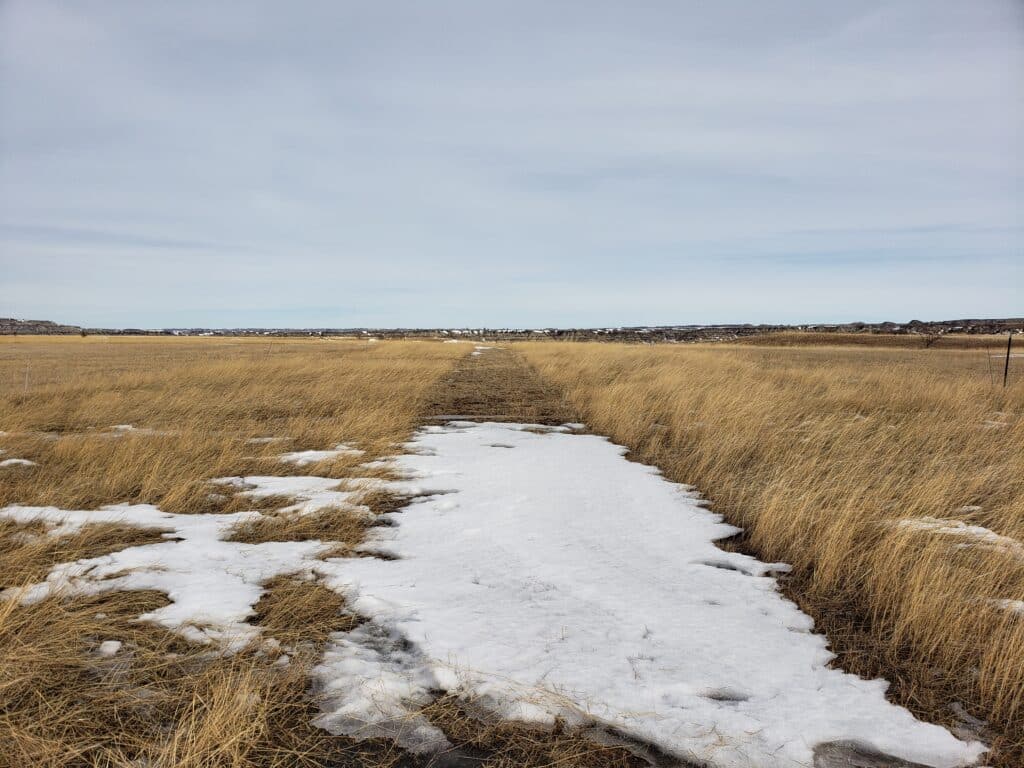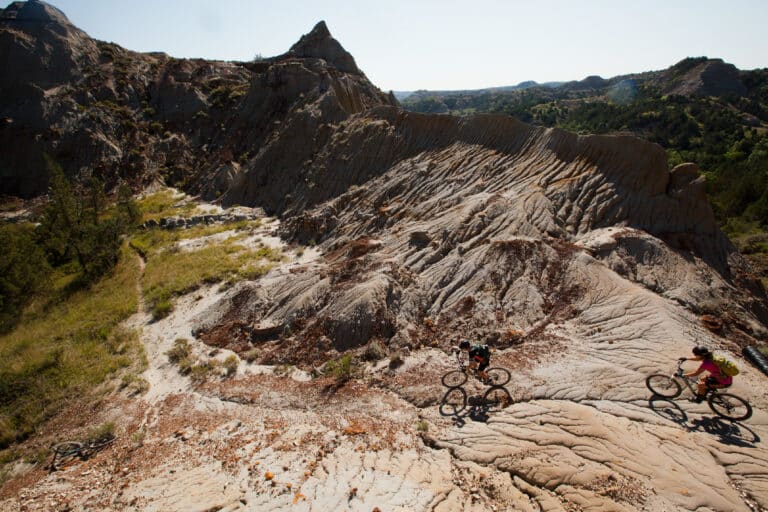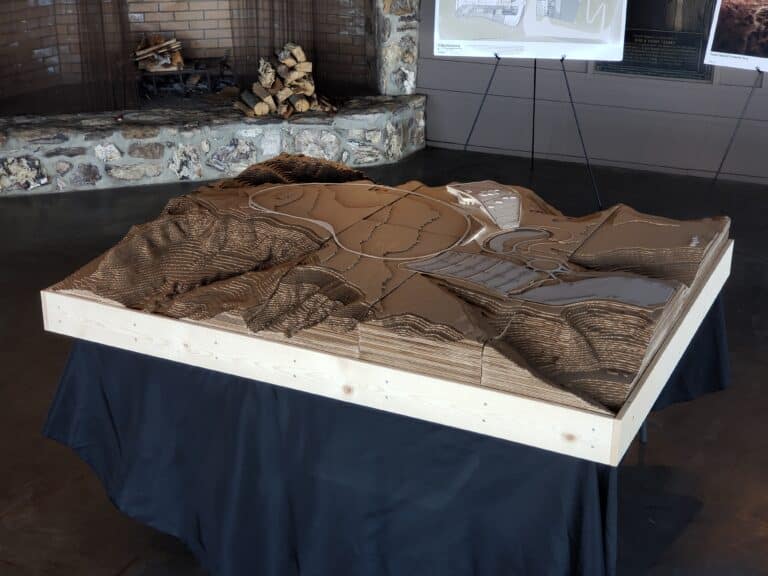It’s not unusual for Medora residents to cross paths with hikers, bikers, campers, and explorers, but over the last two summers, the grasslands have been abuzz with foragers. Embarking on their second summer of collecting native plant seeds is a team of volunteers, ecologists, and landscape architects, led by the upcoming Theodore Roosevelt Presidential Library’s Design Architect and Design Landscape Architect, Snøhetta, Landscape Architect-of-Record Confluence, and Architect-of Record, (us) JLG Architects.
Those who have visited the future site of the Presidential Library have witnessed the aftermath of a prairie wildfire that swept through this land in the spring of 2021, leaving behind a blackened carpet of grass and well-cooked brush. Although the scenario sounds and looks less than ideal, ecologists embrace fire as a natural part of prairie ecology that helps rejuvenate native plants. Pre-settlement, these prairies are said to have burned every five to 15 years, offering a beneficial reset for Mother Nature.
Snøhetta, JLG, and Confluence are embracing help from foraging and the natural phenomenon of fire, with a goal to restore native plants to the Library’s grounds before it opens to visitors in 2026. Since Theodore Roosevelt was considered by many as our country’s founding father of environmental conservation – it’s safe to say he’d be thrilled about this endeavor!
Fun Fact! During T.R.’s presidency, he protected approximately 230 million acres of public land for wildlife by creating the United States Forest Service (USFS). T.R. successfully established 150 national forests, 51 federal bird reserves, four national game preserves, and five national parks, which ultimately led to the 1906 American Antiquities Act.
The Great Search for Seeds
In the two years post-wildfire, teams of volunteers and ecologists have spent their summers foraging for native plant seeds in the grasslands surrounding Medora, including the sites of Roosevelt’s Maltese Cross and Elkhorn Ranch properties.
Once the seeds are collected, they are taken to the NDSU Extension research center in Hettinger, ND, where they are dried, cataloged, germinated, and multiplied in greenhouses. Eventually, these seeds will find their way home, planting roots in the grounds of Theodore Roosevelt Presidential Library. If you’re a true conservationist who’s concerned about the pastureland, rest easy. This Library’s site was previously owned by the U.S. Forest Service, and by agreement, the pastures surrounding TRPL will remain faithful to cattle grazing, even after the Library opens.
Surrendering to Sustainability
Beyond native plant restoration, the Presidential Library is designed to surrender to its 90.3-acre surroundings, blending into the natural landscape of the prairie and inviting nature indoors. Snøhetta, Confluence, JE Dunn, and JLG have worked closely with the Theodore Roosevelt Presidential Library Foundation to prioritize native landscaping and structural sustainability, creating a sweeping Badlands design that emerges delicately from the prairie, camouflaged by turf.
The Library is currently seeking full Living Building Challenge certification to achieve a higher standard of deep site ecology and biophilic design that will make more energy than it consumes, clean the air with net positive carbon, restore the ecology of the setting, achieve water balance, and renew water resources.
What is the purpose of all this effort? We think Ed O’Keefe, CEO of Theodore Roosevelt Presidential Library Foundation said it best, “We want every visitor to the T.R. presidential library and museum to walk out understanding the role of nature as a restorative force in T.R.’s life, and that each of us can be the change we want to see in the world.” When TRPL opens to visitors, it will show what we can learn from, not about, our 26th President.
As envisioned by the Foundation and collaborative team, the Library will be a reflection of the enduring spirit of Roosevelt, bringing immersive storytelling within a state-of-the-art digital library, rich artifact collections, and dynamic exhibits and programs for visitors and scholars – all designed to experience Roosevelt’s life and his lifelong connection to North Dakota and the natural world. To achieve this vision, the Library will be organized around three pillar principles that embody T.R.’s core values: conservation, leadership, and citizenship. These pillars will serve to educate, engage, and inspire action by convening thought leaders intent on making a difference on a regional, national and global scale.
“Conservation means development as much as it does protection. I recognize the right and duty of this generation to develop and use the natural resources of our land; but I do not recognize the right to waste them, or to rob, by wasteful use, the generations that come after us.”
— Theodore Roosevelt
JLG is proud to be the Architect-of-Record for the upcoming Theodore Roosevelt Presidential Library (TRPL) in Medora, ND – alongside the international Design Architect and Design Landscape Architect, Snøhetta, Landscape Architect-of-Record Confluence, and Construction Manager JE Dunn.
Learn more about the upcoming Theodore Roosevelt Presidential Library: Homepage – Theodore Roosevelt Presidential Library (trlibrary.com)





